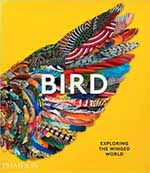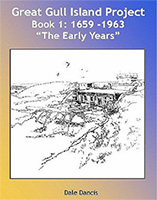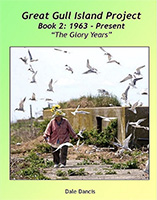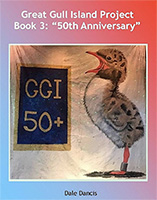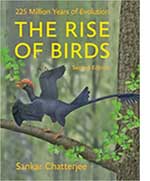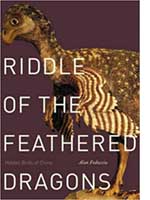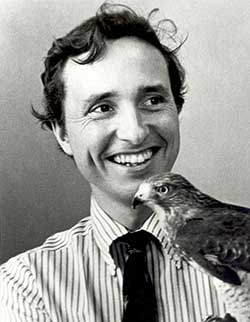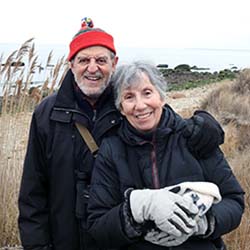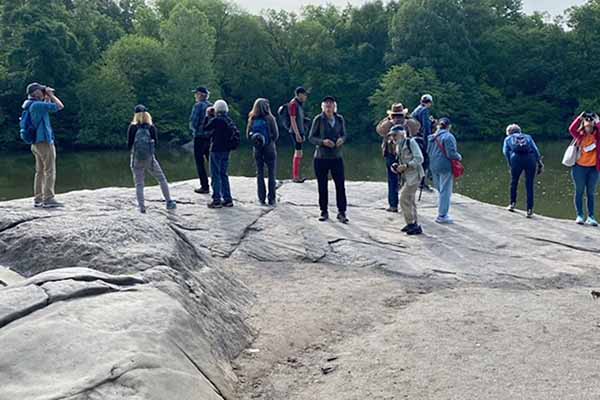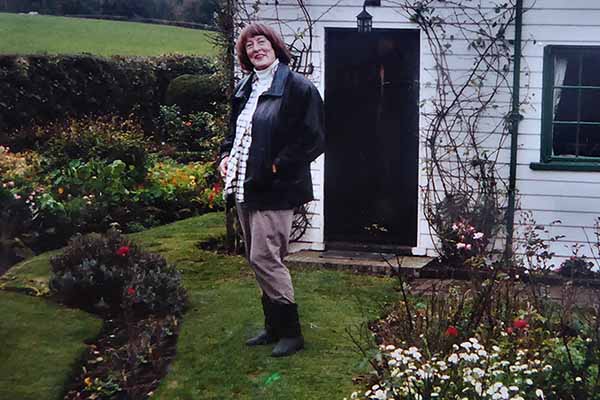March 23, 2022
The Rise of Birds: 225 Million Years of Evolution
Sankar Chatterjee
Johns Hopkins University Press, 1997
Riddle of the Feathered Dragons: Hidden Birds of China
Alan Feduccia
Yale University Press, 2012
My journey with The Rise of Birds by Sankar Chatterjee began innocently with an act of kindness by a friend. During a conversation with Rochelle Thomas, then Vice President of The Linnaean Society of New York, about finding a speaker for the Society who would discuss bird origins, she mentioned Sankar Chatterjee. She had picked up The Rise of Birds at the previous Annual Meeting of the Society and was willing to loan it to me. I had no way of predicting the twists, turns and complications that would arise as a result of reading Chatterjee’s book, but it led directly to Alan Feduccia and his Riddle of the Feathered Dragons. While these two works cover most of the same material, the conclusions drawn by the authors, with one major exception, are polar opposites. They cannot be reconciled. I didn’t know any of this when I began the Rise, but my fate was sealed, my journey begun.
Since becoming a birdwatcher over twenty years ago I have been curious about the origin of birds. Various articles in magazines and newspapers along with some science shows on television provided most of my information on the topic. Many conflicting theories were put forth by very credible scientists, but all of them contained guesses to make the connections that fit their theories. Bipedal dinosaurs with clawed, grasping hands and heavy tails supposedly sprouted feathers and lifted off the ground as the result of a fast run in a strong wind. Quadrupedal dinosaurs climbed trees, sprouted feathers, and jumped, mostly to their deaths, leaving the few survivors to improve upon the use of feathers to soften the impact at the bottom of the jump. Upon closer examination neither theory is correct or complete, but both got one thing right: birds had their start in dinosaurs. But never was there a consistent, supported version of how it happened. Recent discoveries in China, India, and Texas have filled in the holes and closed the discontinuities. Now it is possible to follow the narrative from earliest beginnings to the present. Chatterjee’s The Rise of Birds is that history, splendidly presented in minute detail.
Chatterjee’s presentation is clear and comprehensible. He makes no presumption that the reader has any prior education in paleontology. Further, he devotes entire sections to explaining the mechanics of the anatomical elements under discussion. The evolution of flight is a telling demonstration of the level of detail found in the text.
Flight is a much broader subject than one might suppose. Using excellent drawings to explain and clarify the text, Chatterjee describes how that single defining element, the feather, evolved from a wad of insulating fluff to become the light, flexible, replaceable, differentiated load-bearing element of flight called an airfoil and now found on birds. He explains airfoils, too.
More importantly, he makes clear the step-by-step path that allowed a two-legged tree climber to fly. Of the various general classifications of dinosaurs, it was the group called theropods that, in Chatterjee’s telling, gave rise to birds. Theropods didn’t suddenly grow a variety of feathers and take to the air. The beginnings were adaptations that helped the animal stay in the trees and move between branches. Feathers would improve accuracy by allowing a bit of in-air correction of the direction travelled. Next came parachuting to the ground. With brain growth and reorganization to better control feather disposition, aim improved even more. Landings became less of a hazard. With time and experience the target destination got farther and farther away. Jumping had become several kinds of gliding. With yet more brain power to control muscles and feathers, refined food processing, more oxygen intake to fuel the muscles, and more muscles to power the whole process, gliding became flight.
To understand and follow this fascinating evolution requires a considerable kit of scientific knowledge, a kit I don’t pretend to possess. I know some of the vocabulary and have a good understanding of mechanical things. But were it not for the bounty of excellent drawings and Chatterjee’s clear, concise and direct way of describing his topic, most of this book would have been incomprehensible to me. That said, I found it captivating.
Chatterjee starts in Pompeii to explain in human terms what happened to living animals that made them become the fossil record underlying the story. Preserving bones or teeth is hard enough. It requires an extensive string of just-so conditions that doesn’t usually happen. For a corpse to become a fossil it has to stay pretty much undisturbed long enough for chemical changes in the bones to turn it into stone. Most of the time a storm, a flood, an earthquake, or some hungry beastie comes along and puts an end to the process. To preserve feathers, skin, stomach contents or other soft tissue is nearly impossible. For that you need a very long stretch of very good luck. Yet, the fossils exist.
The complete story of birds requires input from many interrelated sciences. Geology, biology, physics, aerodynamics, evolution, extinction, and others are all present. Twice in the history of birds the equivalent of a musical grand pause has occurred. The first, about 225 million years ago, gave us dinosaurs. The second, about 67 million years ago, nearly put an end to the entire story. The explanation involves volcanism and a quasi-contemporaneous double meteoric impact. In the west, Chicxulub made the huge crater in the ocean floor near Mexico’s Yucatan Peninsula. The effects on climate, weather, and the biome we inhabit were dramatic. And although its existence is not as well established, at about the same geological time, a million years give or take, a meteor called Shiva, forty times as large as Chicxulub, landed, exploded, in India. Dust blocked sunlight for years. Greenhouse gasses spewed in incalculable amounts, raising the earth’s temperature and changing not only weather, but climate. Sulphur compounds in the ejecta acidified the rain resulting in wide scale elimination of plants and animals at the base of the food web. Potable water ceased to be readily available. Much water that could be found was contaminated and toxic. It was an instantaneous event which gave no warning and allowed no time for adaptation. But these devastating events occurred about two thirds of the way through the story. Chatterjee takes us back another 160 million years when archosaurs—the progenitor of dinosaurs—morphed into other species, giving us a variety of dinosaurs, especially theropods, and ultimately birds.
Chatterjee describes the remarkable skeletal similarity of two fossil species found in the same limestone beds in Solnhofen, Germany: Archaeopteryx lithographica and Compsognathus. They obviously are from the same mold, but speciation had begun. One group stayed on the ground and grew larger and heavier to give us T. rex, among other bipedal raptors. The other grew lighter, more agile, and climbed trees. Both groups had feathers. Neither could fly. The tree climbers ultimately became birds. With time and habitat specialization the differences grew in nature as well as extent. Novel changes in the climbers anatomy favored life in the trees, as you would expect. One at a time, Chatterjee describes the effects these changes in morphology permitted and, sometimes, required.
Early feathers, fluffy, unconnected barbules on weak stems, provided some thermal insulation and might have been a sexual attractant, but did little else. There was neither form nor strength that could provide aerodynamic benefit other than perhaps a slight slowing of the descent of the creature if it fell out of the tree. When the barbules started linking together the rachis, or stem, grew stronger. The feathers also began to differentiate in form. Aerodynamic properties began to emerge. Taking advantage of these new properties required the development of muscle groups and mental abilities to both power and control them. Flight was still a long way off.
Bones and organs were also changing. The long, bony tail wasn’t prehensile. It helped with balance on the ground, but was mostly a cumbersome interference in the trees. Over time a shortened version took its place. Several of the bones fused into a tapered lump at the end to provide a base for attachment of early true flight feathers. Jumping between branches to catch prey or avoid being captured became easier and more accurate. The development of differentiated feathers on the forelimbs, along with some reorganization and fusion of some bones, began turning arms into wings. Jumping from between branches became controlled gliding. Aerial travel to a different tree, to the ground, or to lunch became an efficient mode of mobility, but it was still gliding. To get back into the canopy the animal still had to climb the tree. Still, true powered flight was a long way off.
During all this time, bodily changes increased structural strength yet reduced weight. Over time the tail got even shorter and the tapered point became a rounded disc called a pygostyle, which served as a strong, mobile place to attach and control tail feathers. Some forelimb bones disappeared while others fused to provide light, mobile and strong attachments for true flight feathers. A thick membrane called the patagium stretched between the shoulder and wrist. It had some possible early aerodynamic properties similar to the skin in a bat’s wing. It presumably provided the same benefit that the structure provides to modern birds.
Huge muscles are required for powered flight, both for the down or power stroke as well as the upstroke or return of the wing to its starting position. This required a place to attach the muscles to the skeleton. All that tree climbing probably began increasing the size of the keel or ridge on the sternum which became that attachment place for flight muscles later in birds. Changing the spatial relationship of the humerus, clavicle and coracoid bones made the upstroke mechanically possible.
Technically, the pectoralis, the power stroke muscle, is attached to the sternum on one end and the humerus on the other. It contracts to pull the wing downward and forward, providing lift as well as forward motion. The supracoracoideus, the upstroke muscle, is mounted just forward of the pectoralis and is attached to the dorsal side of the humerus after passing through the foramen triossium, which is a passage created by the ends of the three previously named bones. A tendon passing over this notch like a rope over a pulley allows the supracoracoideus to pull the wing up and back when it contracts, even though it is located below and forward of the wing. With more time and more changes, the flight mechanism was perfected, or at least greatly improved.
If that last paragraph came to you as an undecipherable message from the spirit world your tool kit is similar to mine. And these are the easy words, but fear not. The drawings give clear physical shape and function to the parts and processes being discussed and the descriptions are clear and understandable, too.
Huge changes in metabolism were also under way. Large muscles require lots of fuel and lots of oxygen to burn it. A flow-through respiratory system with storage space in many air sacs located all over the body, even inside some bones, made plenty of oxygen available. Food intake was modified in a few ways. The process of lightening the body included shortening the snout and losing some, eventually all, teeth. A horny sheath, the rampotheca we call a bill or beak, became the multi-use food getting tool. A tough internal organ, the gizzard, took over the job of chewing the food.
Skull bones were lightened and reorganized. Some fused for strength. Others were repurposed to create new mobilities. Early birds, like the primitive archosaurs, opened and closed a mouth full of teeth on a single hinge. The new anatomy included an elegant triple pivot mechanism to actuate a new hinge between the dentary, or upper jaw, and the cranium. With this mechanism the bird opens its mouth by rotating the quadrate forward, which swings the mandible downward and a little forward while simultaneously raising the dentary. There is also a kind of push rod between the quadrate and the premaxillary which allows further opening of the tip of the upper bill.
These changes, 160 million years’ worth, were some pretty impressive stuff, requiring the modification, movement, and reconnection of lots of bones, while the brain and eyes were also growing, changing, and moving. By the time Chatterjee brings us to 67 million years ago, our little tree-climbing theropod had come pretty close to becoming a modern bird. In the process we readers learned something of plate tectonics, aerodynamics, speciation, structural differences in skeletal elements, feather origins and functions, cursorial versus arboreal lifestyles, and the interrelatedness of all the variations and specializations relative to changes in habitat.
Then, when avales (the early birds) had moved into just about every habitable niche save dwelling on the deep ocean floor, Chicxulub and Shiva came to call. While Chicxulub was a very controversial theory when it was introduced, it is now well documented and well accepted. The Shiva meteor, a bolide forty times larger and much more destructive, is Chatterjee’s theory and not yet on solid footing. This was already a highly active volcanic period. The Deccan Flow, just off modern day India, had begun oozing lava a couple million years before Chicxulub, but the double blow of both meteors “rang the earth like a bell,” activating even minor and dormant volcanoes. Whether it was one meteor, two, or more yet to be discovered, the damage was global. It was a death blow to much of what lived on the planet.
Though survivors were few, two lines of near-modern birds continued. The Hesperornithines were foot propelled divers, analogs to modern loons and grebes. They had teeth, were heavily built, and were secondarily flightless. These were all good adaptations for hunting slippery prey in water. Icthyornithes, the other line of survivors, were smaller, lighter, and had a keeled sternum. They could fly. This is the clade, or group of similarly structured animals, from which all modern birds evolved.
You might think that, with all Chatterjee had given, this would be the penultimate chapter in the book. The sun has risen and we can see what we could only guess before. Birds are evolved dinosaurs! But Chatterjee is not one to waste the daylight. From the true avian ascendancy during the Cenozoic Era to modern birds, he discusses systematic classification using morphological as well as molecular determinants. He traces avionics from biplane to monoplane design in both aircraft and birds. He discusses brain configuration to allow the progression from leaping through gliding and flapping to true, powered flight. Eggs are described, as is their evolution from a leathery reptilian sack to a multi-membraned, hard-shelled container that allows respiration. The various bill configurations and their functions are covered, too. There seems to be nothing relating to the evolution or the existence of birds left out of this work.
Chatterjee ends this masterful treatise with mankind’s relationship to birds and the effects we have on them. Extinction is not a minor element in this discussion. As with any topic which preceded this chapter, Chatterjee explains and supports what he claims. I came to expect nothing less. At the outset of my experience with The Rise of Birds I was taken aback by the complexity of the response to my simple question: where do birds come from? I felt like the complaining person in the old chestnut “Ask him what time it is and he tells you how to build a watch.” In the process of reading the book I discovered that I really wanted to know how to build that watch. Time lost any importance. Chatterjee had taught me how to build a bird.
This masterwork is not casual reading. As in the appreciation of any complex subject or idiom, education is requisite to comprehension as well as appreciation. I think I have learned much from The Rise of Birds, but if I claimed to have understood and assimilated a third of the material I would be overstating my accomplishment. That said, I read page after page with the rapt interest of a child in a garden full of butterflies. It was much more than a pleasant experience. It was a thirst finally quenched or a hunger well fed. If you, like me, want to know where birds come from, The Rise if Birds is a very good place to start learning. The answer is well worth the effort of the journey.
— HOWEVER —
There is another opinion about the evolution of birds that needs to be considered. Alan Feduccia, in his Riddle of the Feathered Dragons discusses at least six different ways to interpret the fossil evidence. Or, as he sees it, misinterpret it. You will not get the impression that Feduccia agrees with the currently popular theropod theory of bird origin. His position is that birds and theropod dinosaurs separately evolved from the same line of archosaurian progenitor.
Like Chatterjee, Feduccia lays out a good background for the discussion by providing a history of paleontology, with a focus on avian pre-history. He touches on all the big names: Huxley, Darwin, Owen, Marsh, Ostrom, Mayr, and many others. Current researchers in the field—Bakker, Currie, Sereno, Norrell, as well as Chatterjee and Feduccia himself—are all present. His descriptions of the progression of fossil discoveries include the state of “scientific knowledge” in which they are to be interpreted and he shows how this influences their interpretation. While Feduccia’s commentary is not intended to be complimentary, neither is it derisive or mean spirited. Throughout the book he makes his case without rancor, but neither does he pull any punches.
There is another interpretation of the fossil evidence, however. Feduccia, along with several other scientists of note, finds the theory and the corollary—that flight developed from the ground up—to be a misinterpretation of the fossil evidence, biased by the shortcomings of the cladistics method. That is the method of classification that tries to determine how closely related different species might be based upon the type and quantity of their shared characteristics. We, all living things on earth, have a common ancestor, or several, in the line of life that evolved into the tree of life. That doesn’t mean that we are closely related to a sponge or a deer tick, but we do share an origin. To make his case, Feduccia methodically describes the fossils, the analytical methods used to interpret their meaning, and what he considers to be the erroneous conclusions that others, including Chatterjee, have put forth.
To describe the evolution of birds it is important to know what constitutes a modern bird. Here Feduccia and Chatterjee completely agree. It would be difficult to do otherwise with the number of living species available for study. Enter the Urvogel, Archaeopteryx lithographica, found originally in the limestone beds of Solnhofen, Germany. Full disclosure: That term is somehow attractive and is used whenever any bird paleontologist has an opportunity to include it. I like it myself. It connotes more than a mere beginning. The power of this single species’ existence is latent in the term. It is widely, but not unanimously, agreed that Archaeopteryx was the first modern bird.
Feduccia, like Chatterjee, furnishes the reader with many fine drawings showing the elements being discussed. The depictions of fossils in “as found” condition show somewhat articulated skeletal remains with partial information loss and some displacement or disorientation of the fossil elements. It’s more than bones. Gizzard stones, feathers or “proto feather impressions,” and integumentary elements are included, but are somewhat distorted by the process of fossilization. Interpretation of some of these graphic representations was difficult for this layman even though the elements were well labelled. I have seen more orderly piles of bones in the trash bins of restaurants where remains of birds, fish, sheep, pigs, goats, and cattle are all in the same pile. Yet, order is found and made clear to the reader. Kudos to the paleontologists who prepared and studied these fossils.
One anatomical element or process at a time, Feduccia describes, compares, and explains how well or poorly it supports the theory of origin. First comes the pes, or foot. There are three types that matter in the discussion. A cursorial foot, built for walking or running, is fairly flat-bottomed with only a slight curvature in the claws. In contrast, an arboreal foot has highly curved claws which can be articulated to allow walking, but find their true function in grasping limbs and branches as well as prey. A scansorial foot lies somewhere in between the two, but also has one digit which is, or can be, projected sideways for a better grasp on surfaces too large to grip, for example, tree trunks. Modern birds can have any of these three foot configurations as well as some others. The importance of this anatomical element to the origin of birds lies in Feduccia’s discussion of the origin of flight. But first we must understand the current theories of those origins that Feduccia questions. It has to do with dinosaurs.
That birds evolved directly from theropod dinosaurs became a widely held opinion in the late 20th century. Feathers and “proto” feathers were being discovered on many newly found fossils, the great bulk of which were found in Liaoning, China. Texas and a few other locations also contributed to the body of evidence. Bipedal skeletons of earlier dinosaurs, Compsognathus, for example, were quite similar to Archaeopteryx in many aspects. But they were bipedal, had a tail, and so got lumped together with apparently similar theropod dinosaurs without the careful scrutiny Feduccia deems mandatory.
The discovery of feathers on the new additions to the theropod clade triggered a radical change in understanding what constituted a dinosaur. To some, feathers imply endothermy, and endothermy in turn implies increased intelligence. These conclusions brought a new interpretation of intelligence, mobility, and color to these relatives of the physically and mentally slow lizards.
Articles on this “new truth” proliferated at the end of the last century. Many books, magazines, and videos (TV shows then) showed “possible” looks and “artists’ interpretations” of warm blooded, feathered theropod dinosaurs of various sizes and origins. Scientific journals were not immune to the wave of acceptance. Neither were institutions like colleges and museums. The charisma of a brightly feathered T. rex was as irresistible as it was ubiquitous. The tautology was complete. Feathered fossils were considered theropods, so other theropods must have had feathers. Since only theropods had feathers then, and only birds have feathers now, birds must have evolved from theropods. Underneath all the hoopla, marketing and celebration were a handful of small voices in the wilderness saying “but, what about …..?” Feduccia’s was and is one of those voices.
Defining the clade Theropoda is high on the list of “But, what abouts…”. Theropods are cursorial (walking, running, ground dwelling) bipeds with heavy, muscular legs, flat-bottomed feet, and a well-developed bipedal skeleton including shortened forelimbs. They were ground bound animals. Bird ancestors are not. As soon as the bird progenitor began scrambling up the trunks of trees natural selection began preferential pruning and trimming to make that easier to do. The cursorial foot became more scansorial in design and the claws on both hand and foot started becoming more curved.
The shortened forelimbs of a theropod, about 40% shorter than the expected length typically found in quadrupeds, is beneficial to the cursorial biped. There is still enough forelimb left to grasp and manipulate food, prey, or a mate during copulation, but the weight loss is considerable and allows for a lighter tail to balance the center of mass over the hips. This makes for a lighter, faster, and more agile runner or walker, but it would be a detriment to the tree climber. The span of the climber’s grip would be lessened, making it less stable and weaker. Birds don’t have the shortened forelimbs that were so useful to theropods.
Furthermore, for birds to have evolved from theropods, a staple of evolutionary theory would have to be violated. Louis Dollo, French born Belgian paleontologist, proposed in 1893 that “[a]n organism is unable to return, even partially, to a previous stage already realized in the ranks of its ancestors.” This statement, Dollo’s Principle, has been supported by later research and is generally considered to be true. For birds to be evolved theropods would constitute either an exception to, or a negation of, Dollo’s Principle. The shortened forelimbs—the wings-to-be— would have had to become longer again.
That would be misleading. One might think that the shortened forelimbs and large thighs of the movies’ velociraptors, a type of theropod, were the ancestors of a modern roasted chicken’s scrawny wings and big, meaty thighs and drumsticks. They weren’t. The muscles which power those scrawny, but not short, wings are found elsewhere on the skeleton, specifically the breast. It is a wonderfully practical design. The part that moves, the wing, is light, strong, flexible, and articulable. Some muscle is present for that articulation, but the immense power required for flight comes from the pectoralis and supracoracoideus, a.k.a. the breast muscles. Put even half of the breast mass on the wings and the best a bird could do when flapping its wings would be to flop around on the ground.
Return that mass to the middle of the bird, however, and attach one end to a raised ridge, or keel, and some miraculous things can happen. The bird becomes more aerodynamic. Changes in attitude and direction become nearly instantaneous. The rate at which a power stroke can occur is greatly increased because the muscle isn’t waving and shaking all over the place. The big powerful pectoralis muscle merely contracts, pulling on tendons that move the wing downwards and a little forward. Then, the supracoracoideus, a somewhat smaller muscle but still a large one, contracts, pulling on a tendon which passes over the triossial notch to pull the wing back to its starting position. This also stretches out the pectoralis and makes it ready for the next contraction. Each muscle rests while the other is working. If ever there was an argument for intelligent design, this is it. Theropods don’t have this marvelous adaptation. Their forelimbs aren’t used for locomotion. Consequently, their forelimb and breast musculature was much smaller and less sophisticated.
The full list of differences between theropods and birds is lengthy and better left described by Feduccia, but some additional high points are worthy of notice. Theropods and Archaeopteryx have bony tails. Birds don’t. Well, this isn’t exactly correct. Over evolutionary time the ancestral species to birds developed progressively shorter tails. The weight loss aided mobility and shorter tails interfered less in the canopies where they lived. Several of the caudal vertebrae fused into a pointed lump at the end, which allowed stronger muscle attachment and let the involved feathers become more aerodynamically useful. Eventually the pointed lump became a disc called a pygostyle, which allowed the useful fan shaped tail found in modern birds. This evolution brought the function of the tail to its current efficient maximum. So birds do have a bony tail, but it is designed for flight, not running.
Two aspects of the avian skull are noticeably different from theropods. First, flight doesn’t happen just because wing and tail structures are in place. Along with their development came changes in the brain and the inner ear. Most birds have weak senses of smell and taste. This is the result of the diminution of the large olfactory lobe of the brain. It decreased as the cerebral cortices moved ventrally and increased in size. The optic lobes grew as well and moved closer to the eyes. Smell and therefore taste became considerably weaker senses, but the loss was more than compensated by increased visual and cognitive abilities. Smell and taste aren’t very useful in flight, but visual acuity and complex thought are. Theropods don’t have this brain development.
The inner ear, organ of hearing as well as of balance, was modified to better process information about attitude and acceleration. Both are crucial for controlled flight. The fluid filled sacs in the “flight brain” function much as the semi-circular canals do in humans but were honed for the demands of flight. That humans share this type of balance organ with birds should come as no surprise. We both lived in trees at some point. Inner ear abilities were selected for those with better ability to judge direction and acceleration. That is, those with weak skills missed the intended branch and fell to the ground. If they survived they might have been able to again climb the trunk and try again. But, if they were wounded the probability was greatly diminished, especially if a hungry predator was nearby.
As plumage became more aerodynamic, the individuals who missed the branch but controlled the descent path and velocity, even to a small degree, must have had a greatly improved survival rate. Leaping to a distant branch was only an early choice. Parachuting to the ground—falling with style if you are a fan of Buzz Lightyear—made exiting a tree a matter of choice, not the result of bad judgement or poor skills. Neither Feduccia nor Chatterjee mention it, but just as an early bird might aim for a spot with good conditions for landing, I have to think some used the technique to aim for a higher probability of food. Aerial predation might have predated powered flight.
As flight skills improved, claws (hands) became a less efficient means to deal with locomotion or procuring or manipulating food. The claws became superfluous. The very mobile bill, or beak, replaced them for all but climbing, which also was greatly diminished in frequency. Although I have seen a parrot use its bill as a hand to pull itself up an angled branch, the ability to function as tongs, nutcracker, pliers, or shears made the bill a most versatile tool. The bony structures underlying all these functions differentiates birds from theropods, too.
Unlike dinosaurs, crocodiles, lizards, turtles or any other species with a simple jaw hinge, or quadrate, birds developed a much more sophisticated mechanism. The quadrate pivots at the top where it is hinged to the cranium. In dinosaurs, there was another pivot at the bottom of the bone, which allowed the mandible to come open as well as move a little forward as the quadrate pushes it. Birds have all of this plus a band of flexible material at the base of the maxilla, upper bill, which allows it to rotate upward in relation to the skull. This is achieved by a push rod, the jugal bar, connecting at a third pivot point on the quadrate. As the quadrate rotates forward the jaw drops and the upper bill is pushed upward. This process, called prokinesis, allows a wider gape to accept larger food while keeping the cranium immobile.
There is also rynchokinesis. This is the ability to open just the tip of the bill. By keeping the mandible closed, or nearly so, and rotating the quadrate, those same push rods apply force to the tip of the maxilla just beyond another flexible zone. Just the tip of the upper bill rotates upward! This phenomenon is not often seen, but serves as a good explanation of how a shorebird, a dowitcher, for example, can grasp food without trying the nearly impossible task of opening its bill while it is stuck in the mud.
While Chatterjee more fully explains all of this, he does not show that any of the presumed theropod ancestors to birds had these capabilities. It might be considered a minor point by paleontologists, but to this layman such a sophisticated and complex mechanism doesn’t seem irrelevant. There is even a foot in the door for Feduccia’s conjecture that some of the supposed theropods were birds that had become flightless. From the theropod drawings in both books, it appears that there could have been some independent movement of the premaxilla using a similar if not identical method. This bolsters Feduccia’s claim that these bird-ancestor “theropods” might not have actually been Theropods!
Otherwise, the differences between theropod dinosaurs, however actually defined, and birds are sufficiently extreme to make the theropod origin of birds highly unlikely, or even impossible.
- Theropods are obligate bipedal ground dwellers. The entire hip structure is heavy and designed for walking. The hip socket, or acetabulum, differs from that of birds in that there is no antitrochanter, or bone ridge, to keep the legs under and in line with the major axis of the body. Instead, theropods have a facet probably used for attaching some of the powerful muscles required to move the massive legs and feet.
- Theropod forelimbs are approximately 40% of the length expected in a quadruped. This shortening didn’t happen in birds, whose forelimbs underwent a different change to create surfaces where flight feathers could be attached and controlled.
- Bird brains, a.k.a. flight brains, show several characteristics not present in theropods. The reduced olfactory lobe was the trade for much better sight, balance, and a larger, more complex cortex for rapidly processing information. For birds this was no great loss. The sense of smell is not very useful in flight. One exception to this is the Turkey Vulture–Black Vulture mutualism. The Turkey Vulture has a considerably better sense of smell and the Black Vulture has a more acute visual capability. The Black Vulture tags along with the Turkey Vulture as it sniffs its way up the cone of odor given off by carrion which could be several miles away. When they get close to the corpse, the Black Vulture locates the meal visually and leads the way for the Turkey Vulture. Both eat.
- Inner ear enhancement is a telling difference, too. While spatial awareness is important to all mobile life, it is imperative for flight. The changes likely began when the basal archosaur at the top of this evolutionary chain started clawing its way up tree trunks to get a meal or to avoid becoming one. From there, selection had its effect. Those with better balance and more curved claws fared better than the rest and over generations, made their way into the canopy. Life there is very different from life on the ground. The abilities to judge distances, grasp branches, and jump from one to another are mandatory. Second chances are rare, so adaptations are to be expected.
- The heavy long tail of a theropod has a very useful function on the ground: balance. This weight helps compensate for the neck and head to keep the center of mass over the legs. The hips are the fulcrum of this teeter-totter. When the compensating mass is missing, i.e., the other kid jumps off the teeter-totter, the remaining mass quickly drops to the ground. Musculature and energy consumption to compensate for the function of the tail would be extreme.
But in the canopy, a long, heavy, meaty tail is a handicap. It provides no advantage in balance or locomotion in the trees, but it does provide a handle for would be predators to grasp. The shortening would be expected and the modification came with a bonus! The handicap became a useful tool to hold and articulate feathers. From parachuting, to gliding, to powered flight, the shorter, feathered tail became a huge asset for determining direction as well as orientation.
- Birds also moved the fulcrum forward a bit. The legs of a theropod pivot largely at the hip and are straighter than bird legs. Birds point their thighs forward and walk by pivoting at the knee. What we see as the backward bending knee is actually the modified ankle. The “shin” is the tarsometatarsus, or modified arch of the human foot. Bird “feet” are only the toes.
- This modification of the legs and feet is parallel to the changes in the forelimbs in birds. The distal ends are light, strong, and flexible, but lack the bulk and brute strength of a theropod leg. In both cases the main mass of the limb is concentrated near the center of mass of the bird. This allows faster changes in orientation, which is another useful flight adaptation. The classic demonstration of the principle for humans is the spinning skater whose rotation rate increases as arms, mass, are brought closer to the body, the axis of rotation. It’s a pitiful example compared to watching any bird dart and dodge through the branches to avoid capture by a predator.
With these many examples of the differences between birds and theropods, it would have been reasonable to expect Feduccia to stamp Q.E.D. on the last page and go his merry way. But all this description and comparison is but preamble to what Feduccia sees as the cause of the misinterpretations and wrong conclusions. The cladistic method is the culprit.
Cladistics is the grouping of species by the frequency of shared characteristics. At first it makes a lot of sense. Species which share high numbers of the same attributes would seem to have some link or connection. In general, is not a bad starting point, but there are weaknesses in cladistic analysis that must be considered.
First, not all characteristics have equal analytical weight. Plumage color is a good example of weak or no association. If all birds with red feathers were considered a clade, Scarlet Tanagers, Northern Cardinals, Red-winged Blackbirds, and Red Phalaropes along with several woodpeckers some finches, some redpolls, Pine Grosbeak, Red Crossbill and Rose-breasted Grosbeak would be considered more closely related than each species’ actual congeners. Obviously, this is a weak way to determine relatedness. Diet and geography are about as good.
Things which are difficult to modify, like pelvic structure or joint configuration, make much better determinants. The differences between Avian and Theropod pelvises are quite telling. The lack of a supraacetabular shelf, that ridge of bone theropods use for muscle attachment, is one of several defining structures found missing in Archaeopteryx. Without it, the bird could not be a theropod.
One especially weak area in the cladistic method is the inability to discover, let alone deal with, convergence. Convergence is the tendency for animals that do the same things and live similar lifestyles to develop similar body parts better suited to the tasks before them. There is usually a best way or suite of best ways to achieve a particular mechanical goal. Body parts tend to be selected in favor of the design which works best. “Works best” usually means getting more food, water, or shelter, as well as avoiding predators and attracting mates. Whatever may be required to survive—a large bill, stronger teeth, smaller hips, or whatever—will become the norm regardless of any prior connection. However, a waxwing, a finch, and a sparrow with the same adaptive feature will be no more closely related than before the similar adaptation.
Neither does cladistic analysis deal well with heterochrony or neoteny. Both of these developmental effects deal with the timing of different growth processes. Heterochrony is a change in timing or order of particular kinds if growth. Neoteny is the persistence and retention of stages of development. Both can change the appearance and function of an individual making it look like a separate species when it is just an abnormal individual.
With all this evidence contrary to the currently popular theropod origin theory you might expect Feduccia to state his own theory, claim victory and, again, go his merry way. But he does not. At no time in Riddle does Feduccia claim to have an answer other than an admittedly unprovable conjecture that birds and theropods shared some kind of archosaur ancestor. But that is his point. We don’t know and may never discover definitive proof of avian origins.
To quote Feduccia (p.189) “Yet the debate is not and never has been about ‘whether or not birds and dinosaurs share a close evolutionary heritage’ since both sides of the debate have almost always agreed on that issue. The real question is whether Aves is nested within Theropoda and whether flight evolved from earthbound dinosaurs”. Chatterjee and Feduccia are in complete agreement about flight. Both argue convincingly that flight evolved in the canopies, not on the ground. Their disagreement is about whether birds came from theropods or whether Theropoda and Aves both descended from the same earlier progenitor.
The Chinese discoveries made a real mess of contemporaneous research and theory. For most, the supposed theropods with flight feathers was the end of the discussion. Anyone who did not see the obvious and simple “truth” of the new “facts” was either a fool or a troublemaker. Keep in mind that Theropoda is a weakly created grouping that Feduccia critiques in the book. Also note that the Chinese fossils were lumped with theropods because of similarities to other creatures that had previously been lumped incorrectly with other theropods. This failure of cladistics created the schism which followed. Here, Feduccia reveals a surprising but also valid interpretation of the feathered “theropods”. To quote Feduccia: “of course, the real problem was that the authors had actually described two secondarily flightless birds.”
My jaw dropped. I didn’t know if I had just entered a paleontological Twilight Zone or if everything I had just read, with relish, was unproven, misinterpreted conjecture. I have come to the conclusion that, with two exceptions—the theropod origin of birds and the Shiva bolide—everything else in Chatterjee’s Rise is well documented and should be considered good science. Feduccia punches too many holes in the theropod origin theory for me to accept it as proven. That evidence might never be found. The same can be said of the super meteor Shiva. There is a remnant of an impact crater off India which might bear the proof of Chatterjee’s theory, but much research will be required to decide the validity of that conjecture.
Feduccia’s admittedly unsubstantiated suggestion of a common ancestry suffers the same lack of proof. Yet, all current ratites—flightless birds like ostriches, emus, cassowaries, and kiwis—have been shown to come from volant (flying) ancestors. Assuming the same was true for early birds, the idea that a basal archosaur, currently undiscovered, was the origin of birds allows enough time for birds to have developed both flight and secondary flightlessness. In other words, it could be true.
While I am swayed by Feduccia’s arguments and therefore, cannot share the joy of knowing where birds come from, I still enjoyed Chatterjee’s The Rise of Birds. The material greatly overlaps, as would be expected, but Chatterjee makes some anatomical features easier to comprehend. I also like his invocation of the Shiva meteor as a cause of global near extinction. Chicxulub never did seem large enough to me to explain what happened. I hope one day to hear of the missing proof.
I cannot choose one book over the other. If you would read either, you must read both. Both are excellent and jam packed with a delight of bird information. That’s brain candy for me and, I suspect, many others. At base, I still don’t know exactly where birds originated, but I do have a good idea what the current opinions are. I did finish with a strong feeling that I could make a bird with two boxes of toothpicks, some glue, and my pocketknife. Maybe I’ll try it sometime.
